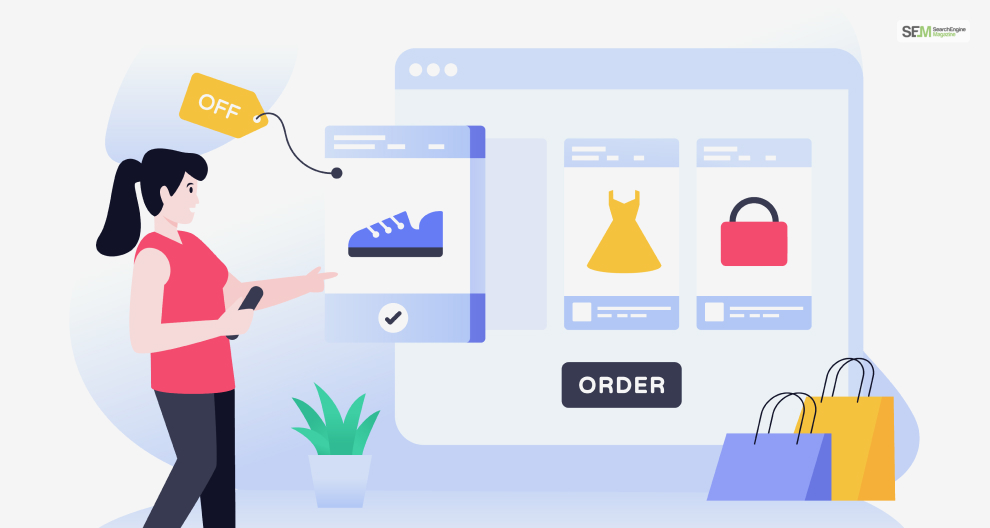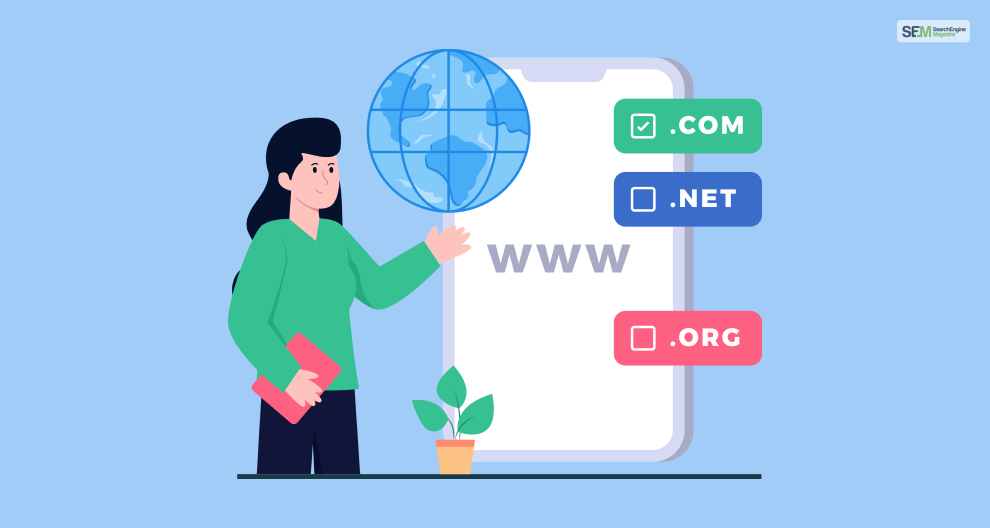White Label Link Building: How Does It Work For SEO Agencies?
Dec 19, 2025

Dec 19, 2025

Dec 18, 2025

Dec 17, 2025

Dec 15, 2025

Dec 15, 2025

Dec 15, 2025

Dec 13, 2025

Dec 12, 2025
Sorry, but nothing matched your search "". Please try again with some different keywords.


If you wish to start selling your products and services online, you must have a proper, well-defined eCommerce website development plan. This is because you can take your business online with a proper eCommerce website.
Therefore, to start your journey to make an eCommerce website for your business, read this post until the end. After you read this, you can formulate the perfect plan for developing your eCommerce website.
If you need an eCommerce website development guide for creating the best eCommerce website, then follow these steps as I have explained below:

You must first focus on deciding what products you wish to sell. This is the first step you need to take regarding a successful eCommerce website development timeline.
Here, you have two kinds of options that you can select from when deciding what products you wish to sell. On the one hand, you have products you know about and know to mass produce. These are products that interest you, making you passionate about selling them.
On the other hand, you have products that the market wants. These are products that are currently in demand in the market. If you sell these products, you are guaranteed to earn a lot of money and profits through lots of sales.
Therefore, you should always conduct market research, depending on the region where you wish to sell your products. Here, your goal is to understand what customers want.
Different customers have different demands. However, you will find similarities if you conduct your customer research carefully. When you see these similarities, focus on them and build your business around them! If the in-demand products are related to what you wish to sell, then it’s perfect!

Now that you have selected which product you wish to sell, it’s time to decide whom to sell it to. Do you want to sell your products directly to customers? Or do you wish to sell them to other businesses?
Therefore, there are two types of eCommerce website development business models you can select from, depending on the type of product or service you wish to sell. They are:
Most businesses focus on selling products directly to customers. This is called the Business to Consumer (B2C) model. These primarily apply to products that consumers will purchase directly and use as it is.
Since you are selling these products directly from your website, no third parties get involved. This makes this a suitable choice for products you cannot produce and sell in bulk. A typical example of such products would be jewelry and food.
If you produce products that you wish to sell to other businesses so that they can modify them and sell them to customers, implement a Business to Business (B2B) model.
These are more suitable for services that you can offer to other businesses. In addition, it’s also applicable to products that you can produce in bulk as a wholesaler.
A typical example of a B2B service is digital marketing. Here, you provide digital marketing services to other businesses.

Now that you have selected which product or service to sell and which business model to follow, it’s time to decide on the finer details per customer needs and make it unique from competitors.
But since you have already decided on which products to sell and which business model to follow, shouldn’t you know who your customers and competitors are?
The answer is – yes. However, you must learn their needs in detail to tailor-make your products and services to their demands.
For example, you must fill market gaps if you wish to learn eCommerce website development to sell computer parts. Therefore, see what your competitors need to sell, and try to align them with customer needs.
For example, if you see a demand for gaming computer parts that other eCommerce businesses need to sell, start selling them to capture untapped markets and make lots of sales!

Now that you are all set with what you wish to sell, it’s time to dive into eCommerce website development.
First, you must decide which eCommerce website development platform to use. There are several website builders that you can start using in this step.
The key benefit of using such website builders is that you don’t need to learn website development to use these developers. All you need to do is drag and drop the various elements you need on your website and get it ready as quickly as possible!
Some of the most influential and popular website developers are:
But how do you decide which b2b eCommerce website development tool to use? There are some key factors that you need to look into, like:
The website developer you choose should have an intuitive and easy-to-use website designer that anyone can use from the get-go. The primary reason people want to use such website developers is that they don’t possess the skills to create one from scratch. That’s just way too much coding!
Therefore, use a developer that lets you control your website’s appearance, making it viewable on desktop and mobile screens.
Since you are looking for an eCommerce website development tool should have features that allow you to manage your inventory.
Therefore, your chosen developer should allow you to edit and record all inventory transactions. This also includes editing such information for multiple versions of the same product (like the same products with different colors).
Every eCommerce website contains various forms of written and pictorial content in them. This includes the likes of images and descriptions of the products you are selling. In addition, your eCommerce website can also contain blogs about the products you sell. These blogs can be copies to convince buyers about the benefits of your products that influence them to buy them.
You should create a shopping cart for buyers. Instead of buying products individually, your customers should be able to buy them together, paying for them in one go. This is why Amazon makes excellent use of this system.
While your customer checks out with their cart full of goodies, they must have multiple payment options. Therefore, your website builder should be able to include various payment options like:
However, if you want the most professional eCommerce website for your business, it’s beneficial to spend a bit to hire a professional website developer.
I recommend this option because most website development tools suggested above come with their own set of themes and designs. Therefore, you must hire a developer if you want a fully personalized eCommerce website. However, check the portfolio of the developer before hiring them. Ensure that you are hiring the best developer for this project.
You can implement a punchout catalog functionality in e-commerce platforms like Magento, Shopify, and other e-commerce platforms. This allows you to cater to buyers using different procurement systems, providing a streamlined purchasing experience and fostering better relationships with customers.

After you are done selecting your custom eCommerce website development tool, it’s time to choose a website name. This is crucial since your website name must be catchy and easily rememberable. I recommend keeping simple names since they can be challenging to pronounce and remember.
Therefore, ensure that there are no other domains with the same name you have in mind. This is why you need to use a domain hosting service. Some of the most popular domain registrars in 2003 are:
Check out all these domain registrars to ensure you get the best domain name possible. In addition, aloof these domain registrars offer various benefits and domain rates. See which registrar provides the best value for money hosting services.
However, if this is your first eCommerce venture and you need more funds, I recommend going for the cheapest domain registrar now. You can always change your hosting services later on!
Developing a catchy and unique name that demonstrates your branding efforts is essential. Therefore, ensure that it’s original and concise.
Apart from purchasing a domain name, you must register your business with state or federal authorities. Therefore, a lot of paperwork must be done here, which can take time.

Decide on its theme when you commence your eCommerce website development (through an online website development tool or by hiring a professional developer).
The website theme here refers to the overall design of your website. If you use an online website developer like WordPress or Shopify, you can select from various themes from the builder. If you want, you can also import custom-made website themes from other websites.
If you have hired a website developer, you can show that person the design and layout of the website you wish to develop. You can take ideas and inspiration from other websites, like Amazon.
You must ensure that your theme should be intuitive for users to navigate, creating a simple marketing funnel.

After your eCommerce website development has finished its designing phase, it’s time to list all your products.
When you list all your products on your web pages, here’s a checklist of what you need to do:
Your product descriptions should contain all the necessary information about your products. Ensure that it’s described simply and concisely. In addition, describe your products very compellingly to convince buyers how good the product is and why they should buy it.
You should also upload well-clicked pictures of your products and descriptions. Ensure that they have a high resolution, with an attention to detail. Customers love to zoom in and see the finer details of your product.
In addition, upload multiple photos of each product taken from different angles showing different color variations. You can also include infographics that highlight what each part of the item does.
When designing your website theme, include product categories as well. This should consist of what products you have to make it easier for customers to search for specific products by filtering them out from the categories above.
Apart from product categories, you should also use filters to help customers look for specific products. Some of the most commonly used filters used by other eCommerce platforms like Amazon are:
Whenever a customer clicks on a product, they should automatically see a comparison with other similar products. Not only does this allow customers to see the pros and cons of the selected product, but they also get other identical product suggestions!

One of the most critical aspects of developing your own website is deciding on various payment gateways.
After your customers select which products they wish to buy, they should be able to add them to their cart and begin the payment process. Here, the total price of all the products in the cart must be displayed on the screen. In addition, you must also provide multiple payment options for customers on checkout, like:

When you finish eCommerce website development, it’s time to publish it and see the money flowing! Once you publish the website with your hosting service, keep a close eye on how the website is performing. Users can often run into bugs and glitches, which they will report. You need to fix this immediately using your web developer.
Coming up with the perfect eCommerce website development timeline to take your business online is difficult. Considerations must be made here, along with investing a lot of money. Therefore, I hope you get started with this dream of yours after reading this eCommerce website development guide! Good luck!
If you have any queries, feel free to reach out to me in the comment section below!
More Resources:
Mashum Mollah is the feature writer of SEM and an SEO Analyst at iDream Agency. Over the last 3 years, He has successfully developed and implemented online marketing, SEO, and conversion campaigns for 50+ businesses of all sizes. He is the co-founder of SMM.
View all Posts
White Label Link Building: How Does It Work ...
Dec 19, 2025
Marketing Fundamentals: How To Build Your Fir...
Dec 18, 2025
AI SEO: Why It Matters & How To Rank O...
Dec 17, 2025
Best QA Testing Tools For Agile Development T...
Dec 15, 2025
NewzNav.com 2014623980: Is This News Site Wor...
Dec 15, 2025

